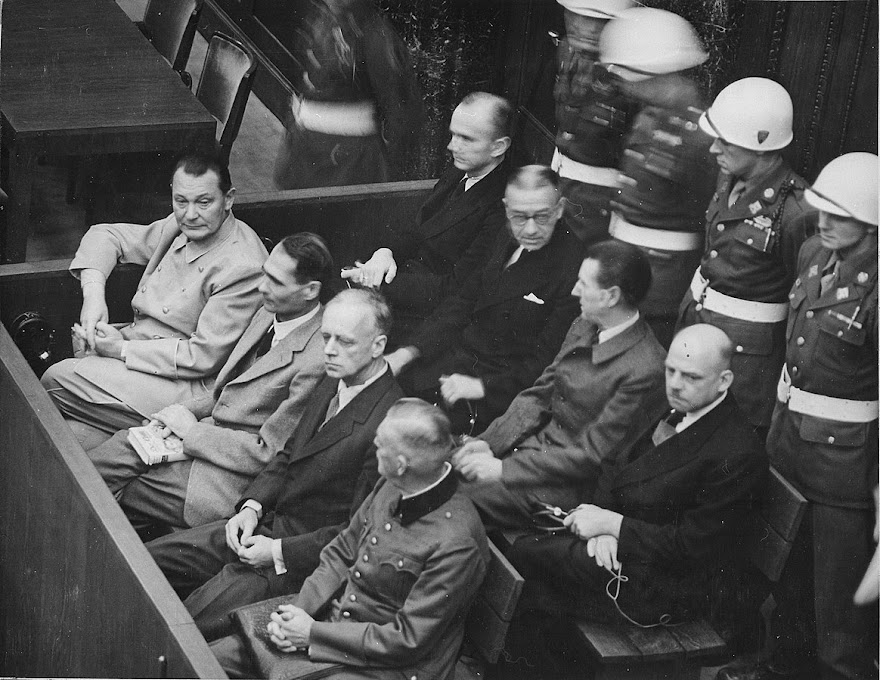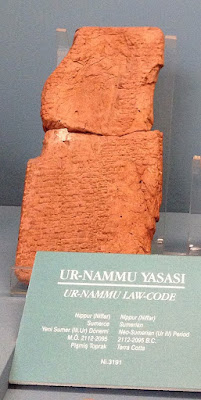 |
| Sophie Scholl Photo from Wikipedia |
By Adrian McGrath
"Such a fine, sunny day, and I have to go. But what does my death matter, if through us, thousands of people are awakened and stirred to action."
The final words of Sophie Scholl
Sophie Scholl was only 21 years old when she was executed by the Nazis for the "crime of treason." She was found guilty by a court in Nazi Germany for distributing anti-war and anti-Nazi
pamphlets at the University of Munich which she attended. Her papers denounced the National Socialist (Nazi) regime and its wartime policies. The Nazis cut off her head with a guillotine.
Sophia Magdalena Scholl (usually called Sophie) was born in Forchtenberg am Kocher in 1921, in what is now southern Germany. Sophie's home was in what was known then as the Free People's State of Wuertteberg.
Her parents had six children, and the family was Lutheran. Her father was a liberal progressive politician, who became the mayor of Forchtenberg. He was strongly opposed to fascism and the Nazis.
Sophie had a rather happy and stable childhood, although the family moved a few times to other German cities. Her father was a business consultant and accountant. Her Lutheran Christian faith and acquiring a proper education were important aspects of Sophie's life, and she took them seriously.
At first she liked school even under the new Nazi regime since it stressed outdoor and group activities which she enjoyed. Being young Sophie did not initially realize or understand the terribly harmful aspects of the new political order. Her parents, however, understood the danger; but there was little they could do to stop the influence of Nazism.
As the Nazis grew in power and terror in the 1930s, it became more and more difficult for Sophie at school as Fascist, racist, and viciously anti-Jewish beliefs and indoctrination entered the educational system in Germany.
This situation also affected her brother Hans who became strongly opposed to the Nazis, although he was for a while in the Hitler Youth. Almost all young people in Germany were in the Hitler Youth then.
Life went on. Sophie continued her education with a keen interest in art, philosophy, and theology. She graduated from the equivalent of high school in 1940 and became a kindergarten teacher. She also had a boyfriend named Fritz Hartnagel, who became a German soldier and fought on the Russian Front.
Under Nazi German law, Sophie had to serve in the National Labor Service (Reicharbeitdienst) for six months. This organization was filled with Nazi propaganda on a daily basis, which Sophie, over time, strongly opposed. This warped Nazi philosophy caused Sophie to search for ways to resist the Nazis.
In May of 1942 Sophie became a student at the University of Munich. She studied biology and philosophy. Her brother Hans also was a student there and studied medicine.
At the university Sophie met Hans' friends; and together they would discuss various subjects in the humanities like art, music, and literature, but also go for hikes, play sports, and attend concerts. Later on, however, their interests turned to politics and discussions about the oppressive Nazi regime and the horrible war, including discussions of Nazi atrocities on the Russian Front.
In the summer of 1942, Sophie was required to work temporarily in a war-related metal plant in the city of Ulm.
Meanwhile, Sophie's father was arrested and put in jail temporarily simply for making a negative comment while at work about Adolf Hitler.
Hans Scholl eventually changed his study from medicine to philosophy and religion. Hans, a Lutheran, joined up with Catholic friends at the university to form what became a passive resistance group calling for the end of Fascism and National Socialism (Nazism). They denounced the war and were strongly opposed to anti-Semitism.
Then the group published underground leaflets asserting their beliefs in freedom and encouraging others to resist the Nazis. The group secretly distributed these pamphlets by mail but also left the leaflets lying around in public places for anyone to read. Additionally, leaflets were secretly distributed at various universities.
This passive resistance group was known as the White Rose (Weisse Rose). The group only had a few members, but it felt it could influence many others through the ideas expressed in the leaflets. The group hoped to eventually team up with other passive resistance groups.
Resistance in Nazi Germany typically had to begin informally and secretly. So, the White Rose originated from a non-political group (just a bunch of friends meeting for fun and shared academic interests); but it became strongly political over time. The group (five students plus one university professor) had come face to
face with the evil of the Nazi regime and decided to take a stand.
The leaflets, denouncing Adolf Hitler and Nazism, were intelligently made and typically quoted the Bible and philosophers like Aristotle with supportive intellectual arguments advocating freedom and morality.
Sophie was not with the political group initially. She just knew the group as friends. When she found out about the political aspects, however, she was thrilled to join. Interestingly, because she was female, it was believed she would be less suspicious as a resister to the Gestapo, the Nazi secret police. This later turned out to be the case, at least initially.
In February of 1943 Hans and Sophia went to Ludwig Maximilian University (aka the University of Munich) and secretly left leaflets in hallways for students to find, while classes were going on.
Sophie also tossed some remaining leaflets from a top flood to the ground below just before they planned to depart. This became a fatal mistake.
The school's janitor, a hardcore Nazi, noticed this and called the Gestapo. Hans was captured with a draft of a leaflet on him, which in turn led to the arrest of other White Rose members.
At first, the Gestapo actually thought Sophie was innocent of the matter. Sophie later confessed to being in White Rose, however. She tried to protect the other members by doing this -- trying to take the blame on herself. But the Gestapo eventually discovered the full facts.
Sophie was taken to the People's Court (Volksgerichtshof) on February 22, 1943. She asserted that she simply wrote and said what other people believed but dared not publicly communicate.
The accused were not allowed any legal defense. The defendants were in fact not even allowed to speak in their own defense in court. Sophie reportedly interrupted the judge several times, however, to no avail.
The People's Court followed Nazi beliefs and not real law as we know it.
Hans, another group member named Christopher Probst, and Sophie were found guilty of treason by a Nazi judge, Roland Freisler. The penalty was death.
The three were executed -- their heads cut off by a guillotine.
The Nazi judge, Roland Freisler, by the way, was killed later in the war when American B17 bombers attacked Berlin hitting various targets and blew up his courthouse too, killing the Nazi judge.
This judge was a favorite of Adolf Hitler's and had presided over the cases of the July 20 conspirators who tried to assassinate Hitler in 1944.
 |
| Nazi judge Roland Freisler (center) in the Nazi People's Court or Volksgerichtshof (Wikipedia.com) |
The other members of the White Rose were eventually caught and executed by the Nazis.
In all the White Rose published and distributed six leaflets. A draft of the seventh leaflet from the White Rose was smuggled to Britain.
The document was later mass-produced by the British and called "The Manifesto of the Students of Munich."
 |
The Guillotine was the type of device used to execute Sophie Scholl. The Nazis used the guillotine to kill over 16,000 prisoners during their reign. The Nazi version was slightly different from the one in the above photo. The German version was made mainly of steel and had a heavier blade making it a more efficient killing machine. Photo from Wikimedia Commons Commons https://commons.wikimedia.org/wiki/File:Guillotine_Luxembourg_crop.jpg |
In 1943 the British Royal Air Force (RAF) dropped millions of copies of this manifesto document all over Germany. In this way, many Germans could read what the White Rose advocated -- a call for freedom. Germans could now see that fellow Germans denounced Hitler and the Nazis.
Sophie Scholl died a young woman, but her memory lives on. Today in Germany Sophie Scholl is rightly honored as a national hero. She is an inspiration for all people who believe in freedom.
Sources and further reading: "Sophie Scholl" article at Wikipedia.
"Sophie Scholl and the White Rose" at nationalww2museum.org/war/articles/Sophie-Scholl-and-white-rose
From BBC online "Sophie Scholl: Student who resisted Hitler and inspires Germany"
https://www.bbc.com/news/world-europe-57008360#amp_tf=From%20%251%24s&aoh=16594190696415&referrer=https%3A%2F%2Fwww.google.com&share=https%3A%2F%2Fwww.bbc.com%2Fnews%2Fworld-europe-57008360
Photo of Roland Freisler https://en.m.wikipedia.org/wiki/People%27s_Court_(Germany)#/media/File%3ABundesarchiv_Bild_151-39-23%2C_Volksgerichtshof%2C_Reinecke%2C_Freisler%2C_Lautz.jpg







No comments:
Post a Comment